Menudo was always a weekend favorite, the kind of dish that would wake everyone up with its mouthwatering aroma. But it wasn't until I visited my college friend in Marikina that I discovered Waknatoy, their unique spin on our beloved menudo.
My kids, who are usually picky eaters but love traditional menudo, were surprised by the sweet-tangy twist from the gherkin pickles. At first, they were skeptical (just like I was), but after one bite, they were hooked!
This version from Marikina has since become our family's go-to lunch recipe, perfectly combining familiar menudo flavors with an exciting twist that keeps everyone asking for seconds.
Jump to:
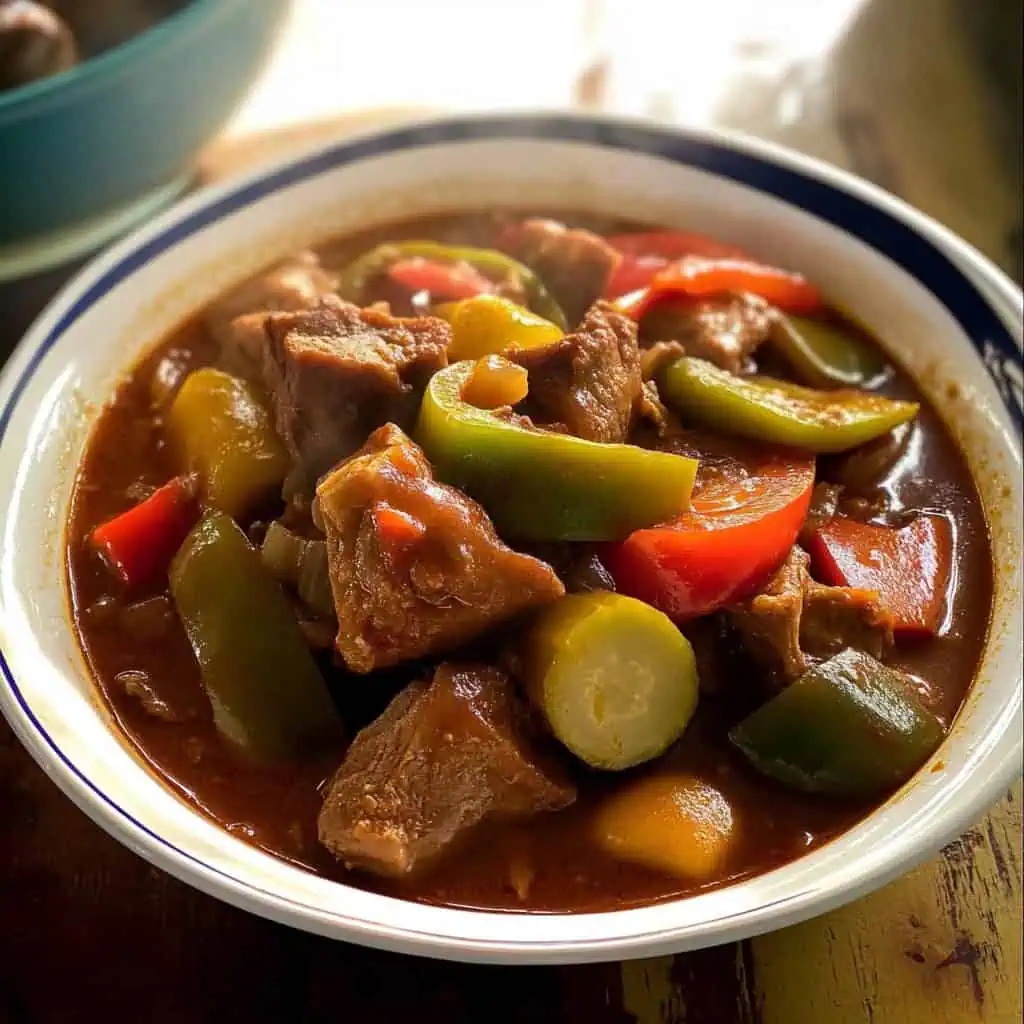
Why You'll Love This Recipe
- Perfect Balance of Flavors: Sweet, tangy, and savory notes create a complex taste profile
- Make-Ahead Friendly: Flavors improve over time, perfect for meal prep
- Budget-Friendly: Uses accessible ingredients and can be easily scaled
- Versatile: Works as both a main dish and sandwich filling
- Heritage Recipe: Authentic Marikina recipe passed down through generations
Ingredients
The ingredients in Waknatoy create a perfect balance of flavors and textures that set it apart from regular menudo. Pork shoulder provides richness and becomes tender when slow-cooked, while pork liver adds depth and earthy notes. The sweet gherkin pickles and their juice bring the signature tangy-sweet flavor that makes Waknatoy unique to Marikina.
Chorizo de Bilbao contributes a smoky, savory element and beautiful color. Bell peppers add freshness and visual appeal, while garbanzo beans provide texture contrast and heartiness. The combination of tomatoes, garlic, and onions creates a flavorful base that ties everything together.
Each ingredient has been carefully selected through generations of cooking to create this beloved heritage dish that perfectly represents Marikina's culinary tradition.
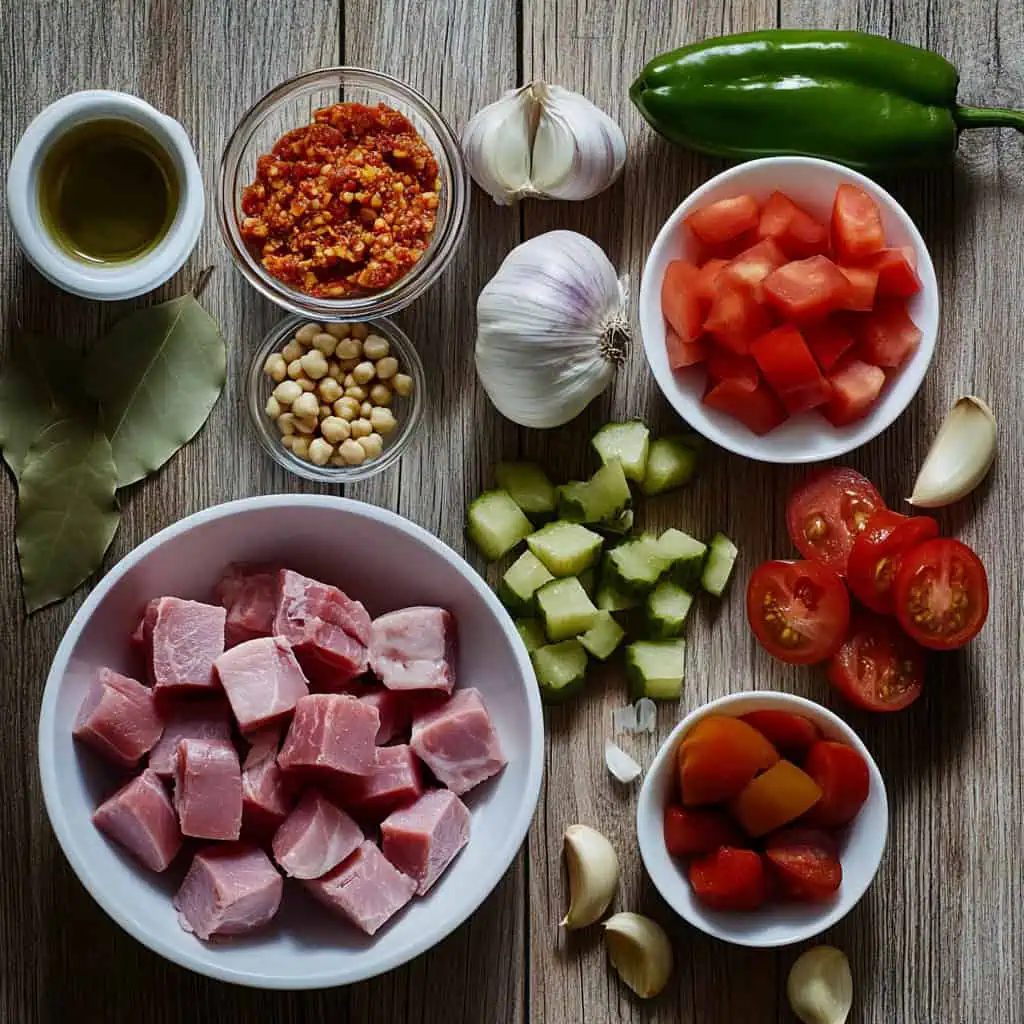
For the Marinade:
- 2 pounds pork shoulder, cut into 1-inch cubes
- ¼ cup pickle juice
- 2 tablespoons soy sauce
For the Stew:
- 1 tablespoon canola oil
- 2 pieces Chorizo de Bilbao, sliced
- 1 onion, peeled and chopped
- 3 cloves garlic, peeled and minced
- 4 Roma tomatoes, chopped
- 1 cup water
- 1 tablespoon tomato paste
- 6 pieces sweet Gherkin pickles, cut into 1-inch thickness
- 1 bay leaf
- ½ pound pork liver
- 1 medium red bell pepper, cubed
- 1 medium green bell pepper, cubed
- ½ cup garbanzo beans, drained
- Salt and pepper to taste
Equipment
- Thick-bottomed Kawali or Dutch Oven: Essential for even heat distribution, preventing the sauce from burning, and allowing the flavors to develop properly
- Sharp Knife: Needed for uniform cutting of meat and vegetables, ensuring even cooking and better presentation
- Wooden Spoon: Perfect for gentle stirring without scratching your cookware and maintaining the integrity of delicate ingredients
- Cutting Board: Preferably separate ones for meat and vegetables to prevent cross-contamination
- Measuring Cups and Spoons: For precise ingredient portions, ensuring consistent results every time
- Colander: Used for draining the marinated meat properly while preserving the marinade
- Kitchen Timer: Helps ensure precise cooking times for perfectly tender meat
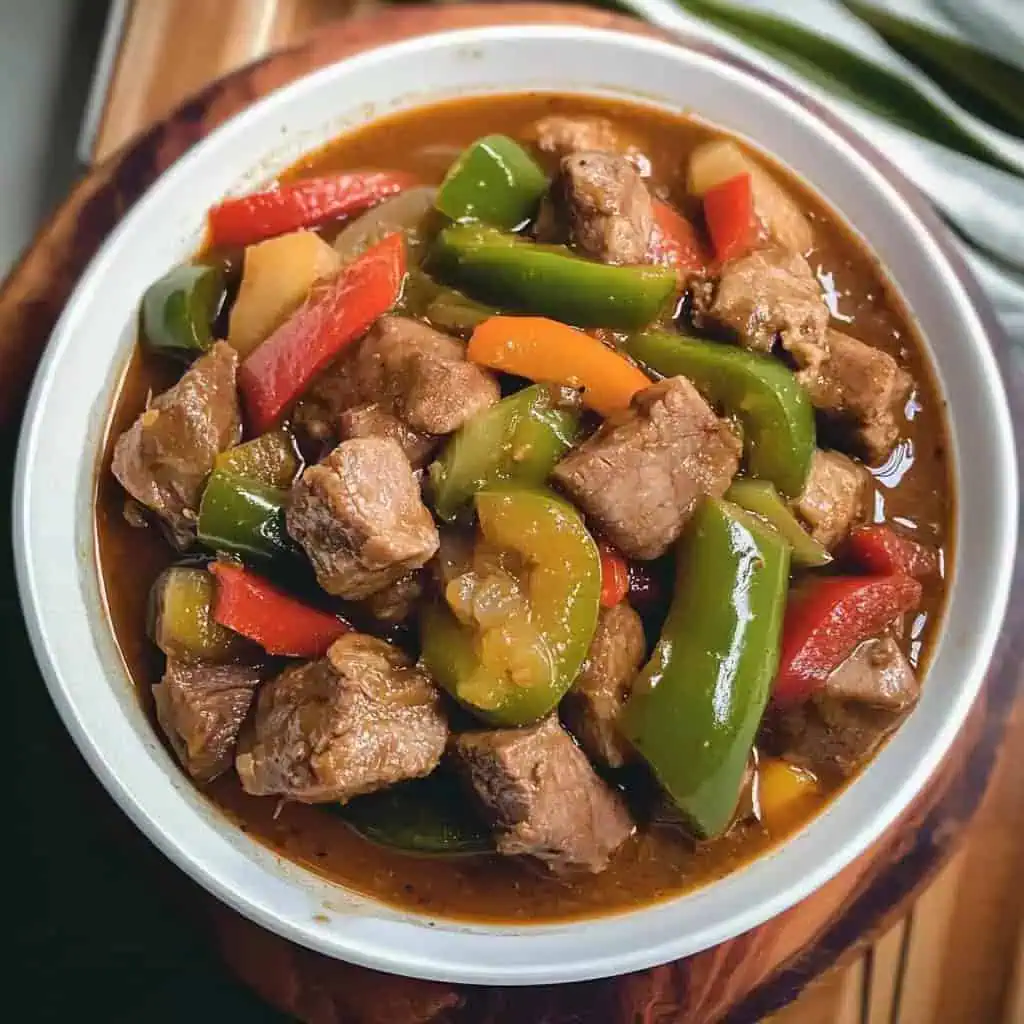
How To Make
- Marinate the cubed pork shoulder in pickle juice and soy sauce for 30 minutes in the refrigerator. Once done, drain the meat but save the marinade - you'll need it later.
- Heat canola oil in a deep pan over medium heat. Cook the sliced chorizo de bilbao until lightly browned, then remove and set aside. In the same pan, cook your chopped onions, minced garlic, and the marinated pork. Keep cooking until the meat turns light brown, stirring occasionally.
- Add your chopped tomatoes and cook them until they become soft, helping them break down by pressing with your spoon. Pour in the water, the reserved marinade, and tomato paste. Add your sliced sweet pickles and bay leaf. Stir everything together and bring to a boil. Once boiling, reduce the heat, cover the pan, and simmer for about 20-30 minutes until the pork becomes tender.
- When your pork is tender, add the liver. Wait for about 20-30 seconds before stirring - this keeps the liver tender. Return the cooked chorizo to the pan, then add your bell peppers and garbanzo beans. Season with salt and pepper to taste.
- Cover and cook for another 6-10 minutes, or until the sauce thickens enough to coat the back of a spoon. The dish is ready when the liver is just cooked but still tender. Let it rest for 5 minutes before serving with hot rice - this allows the flavors to meld together even more.

Tips from Lola's Kitchen
- Meat Selection: Choose pork shoulder with some fat marbling for better flavor and juicier results
- Pickle Secret: Use sweet gherkin pickle juice for the marinade - it's more flavorful than regular vinegar and adds that signature Waknatoy taste
- Liver Technique: Don't overcook the liver; add it last to keep it tender and prevent it from becoming grainy
- The First Bite Test: Always taste before adding more salt - the chorizo, soy sauce, and pickles already contain plenty of salt
- Sauce Consistency: If the sauce is too thin, remove the lid during final simmering to reduce it to the perfect consistency
- Resting Period: Let stand 10 minutes before serving to allow flavors to settle and deepen
- Next-Day Magic: If possible, make this a day ahead - many Marikina families swear the flavor improves overnight
Substitutions
- Pork: Chicken thighs or beef chuck work well as alternatives. For chicken, reduce the cooking time to about 15-20 minutes
- Chorizo de Bilbao: Hungarian sausage, Spanish chorizo, or even hot dogs can work in a pinch
- Pickle Juice: If unavailable, substitute with 3 tablespoons calamansi juice or white vinegar mixed with 1 teaspoon sugar
- Fresh Tomatoes: Can use 1 cup canned diced tomatoes instead of fresh
- Liver: Can omit entirely or use chicken liver instead (cook for even less time, about 2-3 minutes)
- Garbanzo Beans: Green peas or kidney beans make good substitutes while maintaining the texture contrast
Troubleshooting
- Tough Meat: Solution: Extend cooking time by 15-minute increments until tender. Make sure your marinade includes the pickle juice which helps tenderize the meat
- Watery Sauce: Solution: Simmer uncovered for 5-10 extra minutes to reduce and concentrate the flavors. Alternatively, mix 1 teaspoon cornstarch with 1 tablespoon cold water and stir into the sauce
- Too Salty: Solution: Add quartered potatoes to absorb excess salt, then remove before serving. You can also add a teaspoon of sugar to balance the saltiness
- Liver Too Tough: Solution: Add liver later in the cooking process and cook for just 3-5 minutes. Slice it slightly thicker (about ½-inch pieces) to prevent overcooking
- Pickles Too Overpowering: Solution: Blanch the pickles in hot water for 30 seconds before adding to the stew to mellow their flavor
Storage & Reheating
- Refrigeration: Store in an airtight container for up to 3 days. The flavor actually improves after a day in the refrigerator
- Freezing: Freeze in portion-sized containers for up to 2 months. Thaw overnight in the refrigerator before reheating
- Reheating Methods:
- Stovetop: Reheat over low heat with a splash of water or broth to maintain moisture. Stir occasionally until internal temperature reaches 165°F
- Microwave: Heat in 2-3 minute intervals at 70% power, stirring between each interval to ensure even heating
- Slow Cooker: Place on low setting for 1-2 hours for a hands-off approach that gently reheats without drying out the meat
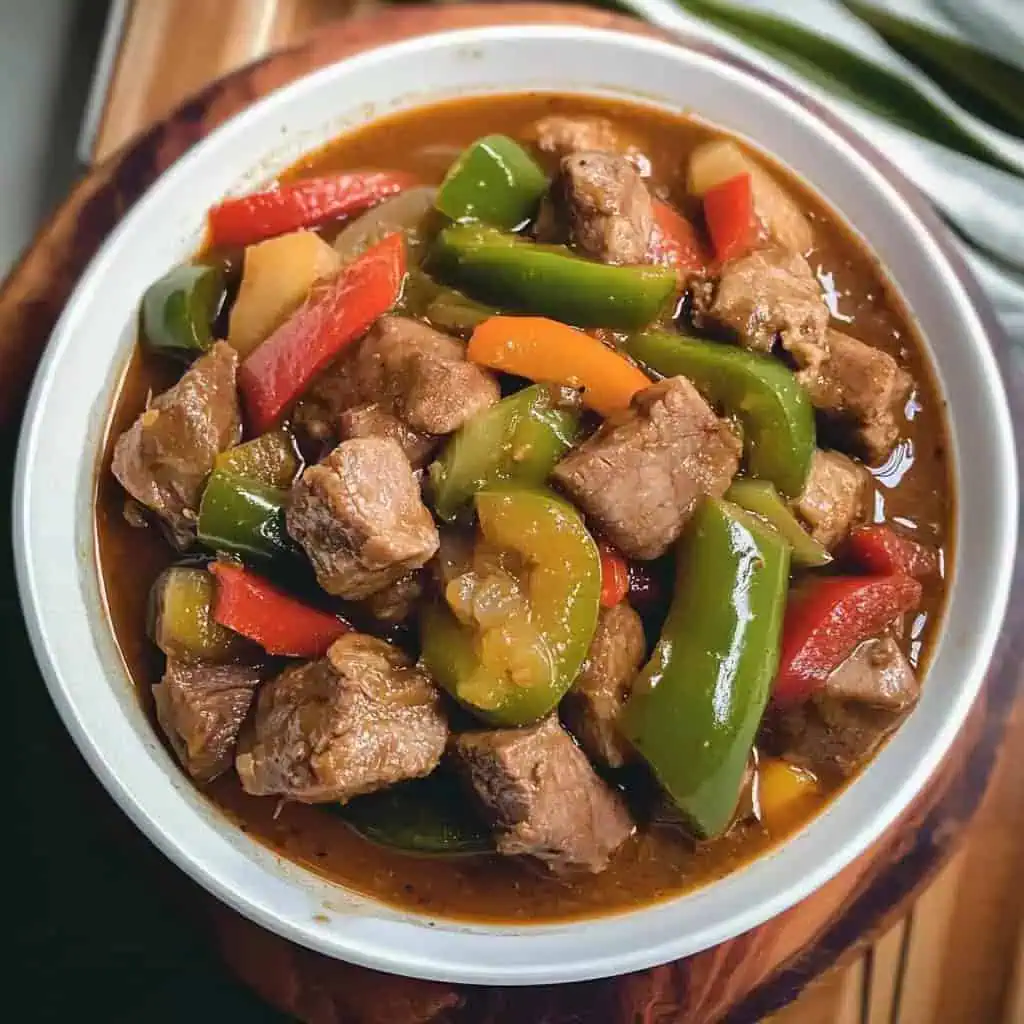
FAQ
Can I make this ahead for a party?
Yes! In fact, many Marikina families prepare this dish a day ahead as the flavors improve overnight. Simply reheat gently before serving.
Is this the same as regular menudo?
No, Waknatoy is distinguished by its use of pickles and the deliberate absence of potatoes and carrots. The flavor profile is more complex with sweet, tangy, and savory notes.
How can I make it more child-friendly?
Reduce the pickle amount by half and add a tablespoon of brown sugar to increase sweetness. You can also dice the pickles very small so they blend into the sauce.
Can I use pressure cooker or Instant Pot to make this faster?
Yes! Pressure cook the marinated pork with onions, garlic, and tomatoes for 15 minutes. Then add the remaining ingredients and simmer uncovered until the sauce thickens.
What makes Marikina Waknatoy unique?
The addition of sweet pickles creates a distinctive sweet-tangy flavor profile, and its cultural history as a dish that evolved from Chinese-Filipino culinary exchange makes it special to the region.
Can I add vegetables like carrots and potatoes?
While traditional Waknatoy deliberately omits these, you can add them if you prefer. Just know that it will taste more like regular menudo and less like authentic Waknatoy.
What's the best way to serve Waknatoy for a celebration?
In Marikina, it's traditionally served in a large clay pot (palayok) placed at the center of the table with steaming white rice on the side, calamansi, and patis (fish sauce) for additional flavor adjustment.
Related
Looking for other recipes like this? Try these:

Waknatoy (Marikina Menudo)
Equipment
- Thick-bottomed Kawali or Dutch Oven (Kaldero) For even heat distribution and preventing burning
- Sharp Knife (Matatalas na Kutsilyo) For uniform cutting of meat and vegetables
- Wooden spoon (sandok na kahoy) For gentle stirring without scratching the pan
- Cutting board (Tabla) Preferably separate ones for meat and vegetables
- Measuring cups and spoons (Panukat) For precise ingredient portions
- Colander (salaan) For draining marinated meat
- Kitchen Timer (Orasan) To ensure precise cooking times
Ingredients
For the Marinade (Pinagbabaran):
- 2 pounds pork shoulder Kasim, cut into 1-inch cubes
- ¼ cup pickle juice Suka ng Pipino
- 2 tablespoons soy sauce Toyo
For the Stew:
- 1 tablespoon canola oil
- 2 pieces Chorizo de Bilbao sliced
- 1 onion Sibuyas, peeled and chopped
- 3 cloves garlic Bawang, peeled and minced
- 4 Roma tomatoes Kamatis, chopped
- 1 cup water Tubig
- 1 tablespoon tomato paste Pino na Kamatis
- 6 pieces sweet Gherkin pickles Matamis na Pipino, cut into 1-inch thickness
- 1 bay leaf Dahon ng Laurel
- ½ pound pork liver Atay ng Baboy
- 1 medium red bell pepper Pulang Paminta, cubed
- 1 medium green bell pepper Berdeng Paminta, cubed
- ½ cup garbanzo beans Garbanzos, drained
- Salt Asin and pepper (Paminta) to taste
Instructions
- Marinate the cubed pork shoulder in pickle juice and soy sauce for 30 minutes in the refrigerator. Once done, drain the meat but save the marinade - you'll need it later.
- Heat canola oil in a deep pan over medium heat. Cook the sliced chorizo de bilbao until lightly browned, then remove and set aside. In the same pan, cook your chopped onions, minced garlic, and the marinated pork. Keep cooking until the meat turns light brown, stirring every now and then.
- Add your chopped tomatoes and cook them until they become soft, helping them break down by pressing with your spoon. Pour in the water, the marinade you saved earlier, and tomato paste. Add your sliced sweet pickles and bay leaf. Stir everything together and let it come to a boil. Once boiling, turn down the heat, cover the pan, and let it cook gently for about 20-30 minutes until the pork becomes tender.
- When your pork is tender, add the liver. Wait for about 20-30 seconds before stirring - this keeps the liver tender. Put the cooked chorizo back in, then add your bell peppers and garbanzo beans. Add salt and pepper until it tastes right to you.
- Cover and cook for another 6-10 minutes, or until the sauce becomes thick enough to coat your spoon nicely. The dish is ready when the liver is just cooked but still tender. Let it rest for 5 minutes before serving with hot rice - this makes it taste even better.
- This recipe serves 4-6 people and takes about 1 hour and 30 minutes total, including marinating time. You can make it ahead - many people say it tastes even better the next day.
Tips from Lola's Kitchen
- Meat Selection: Choose pork shoulder with some fat marbling for better flavor
- Pickle Secret: Use sweet gherkin pickle juice for marinade - it's more flavorful than regular vinegar
- Liver Technique: Don't overcook the liver; add it last to keep it tender
- Sauce Consistency: If sauce is too thin, remove lid during final simmering
- Resting Period: Let stand 10 minutes before serving to allow flavors to settle
Nutrition
The Story Behind Waknatoy
In the bustling streets of Marikina, a unique version of menudo tells the story of cultural fusion and local innovation. Waknatoy, a dish that emerged from the city's vibrant culinary landscape, represents how Filipino cuisine evolves through community interactions and creative adaptations. This heritage dish earned its peculiar name from the daily exchanges between local eatery owners and their Chinese merchant customers in the mid-20th century.
As the story goes, Marikina's restaurants and carinderias frequently served this pickle-infused menudo variation, making it a staple in their daily menu. Chinese merchants, who were regular patrons of these establishments, would often exclaim "Wag na ito!" (meaning "Not this again!") upon seeing the same dish day after day. Their pronunciation of the phrase, influenced by their Chinese accent, came out as "Wak na toy." The Marikeños, known for their wit and humor, embraced this mispronunciation and officially named the dish "Waknatoy."
What sets Waknatoy apart from traditional Filipino menudo is its distinctive use of sweet gherkin pickles and pickle juice, a culinary twist that reflects Marikina's innovative spirit. Unlike the classic menudo found throughout the Philippines, this version intentionally omits potatoes and carrots, allowing the interplay of pork, liver, chorizo, and pickles to create a unique flavor profile that's simultaneously familiar and surprising. The dish showcases how local communities can transform familiar recipes into something entirely their own.
Today, Waknatoy stands as a testament to Marikina's rich culinary heritage and the natural evolution of Filipino food. It remains a beloved dish in Marikina households, proudly served during family gatherings, fiestas, and special occasions. This hearty stew not only offers a glimpse into the city's food history but also demonstrates how cultural exchanges and daily interactions can shape and enrich local cuisine, making it an important part of Marikina's gastronomic identity.
The enduring popularity of Waknatoy in Marikina's modern food scene proves that some of the best culinary innovations come from simple, everyday interactions between communities. Whether served in traditional carinderias or contemporary restaurants, this dish continues to tell the story of Marikina's culinary creativity and the warm, welcoming spirit of Filipino food culture.
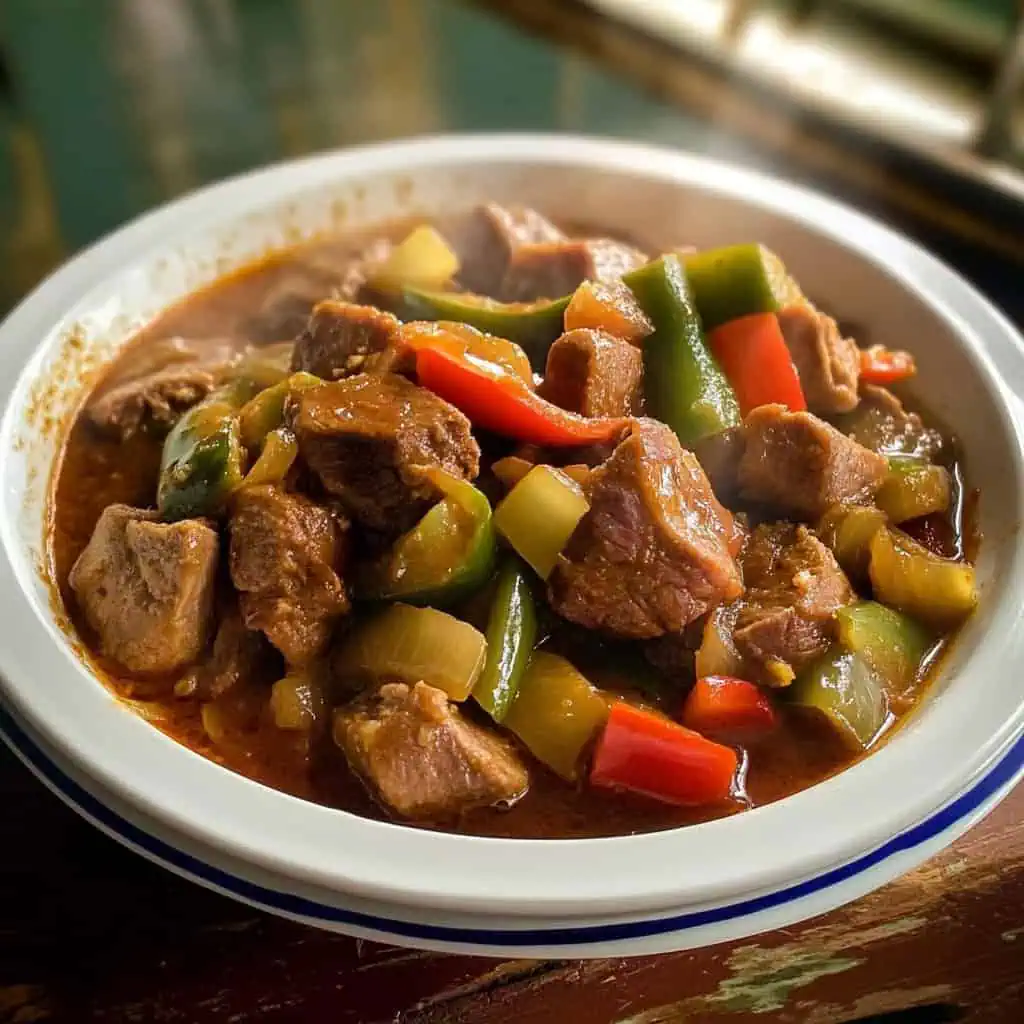









Comments
No Comments